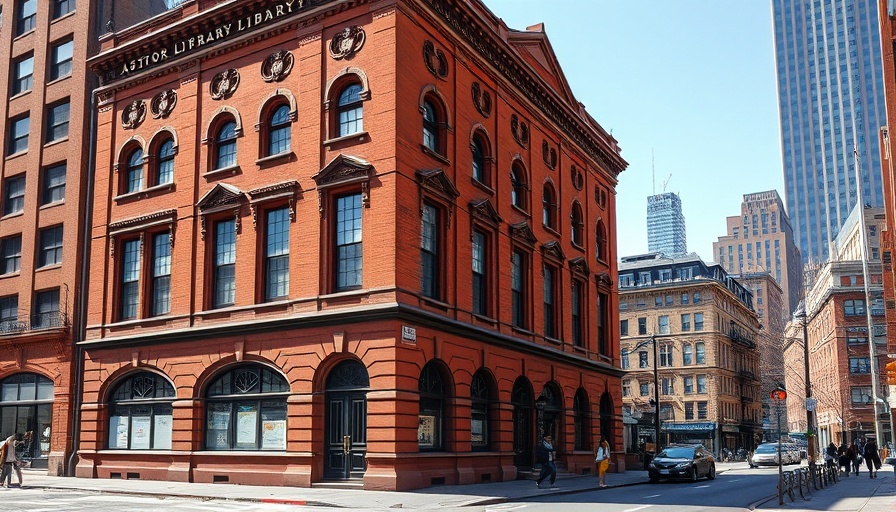
From Wealth to Philanthropy: The Legacy of John Jacob Astor
John Jacob Astor, a name synonymous with wealth in 19th-century America, was more than just a real estate mogul; he was a visionary who greatly influenced New York City’s landscape. Arriving in the U.S. after the Revolutionary War, Astor quickly identified opportunities in the fur trade and real estate, amassing a fortune that would make him the wealthiest man in the country by the time of his death in 1848. His estate was valued at over $20 million, representing a staggering 0.9% of the nation's GDP at that time. However, it wasn’t just his financial acumen that marked his legacy. His most significant act of philanthropy was establishing a public library—a concept that was revolutionary at the time.
The Birthplace of Public Knowledge: Astor Library
Founded in 1848 and officially opened in 1854, the Astor Library was a groundbreaking institution. Unlike other libraries of the era that were often private collections, it was designed to serve the public—though it functioned primarily as a reference library, accessible only during the day. With a collection of 80,000 volumes, the Astor Library was pioneering in many ways, not least in its architecture. It showcased the Rundbogenstil style, which reflected Astor's German roots. However, 1895 marked a turning point when the Astor Library merged with the Lenox Library and the Tilden Trust to form what is now known as the New York Public Library, laying the foundation for one of the largest library systems in the world.
The Transformation into a Cultural Hub
Following its closure as a library in 1911, the historic building faced the threat of demolition but was eventually repurposed as the home of The Public Theater in 1967. This transformation is both poignant and symbolic—the first public library in New York has become a theater dedicated to public access to the arts. Joseph Papp, the founder of The Public Theater, based his institution on the belief that theater is an essential cultural necessity, echoing the earlier philanthropic spirit of John Jacob Astor. This shift underlines the evolving role of such buildings, showcasing their adaptability and continued relevance in serving public needs.
Why This History Matters Today
The story of the Astor Library and its transformation into The Public Theater highlights the importance of public spaces and institutions in our society. For today’s lawyers, accountants, and medical professionals operating in a fast-paced urban environment, understanding these historical narratives is essential. They underscore the value of accessibility—whether to books or performances—as a cornerstone of New York's cultural identity. It is crucial to appreciate how these public institutions have evolved to meet the needs of their communities, ensuring that culture remains vibrant and accessible to all.
As we look to the future, it is vital to advocate for the continued support of public libraries and theaters, just as John Jacob Astor and Joseph Papp did. They remind us that the arts and access to knowledge are not just luxuries but essential elements of a thriving society.
 Add Row
Add Row  Add Element
Add Element 



 Add Row
Add Row  Add
Add 
Write A Comment